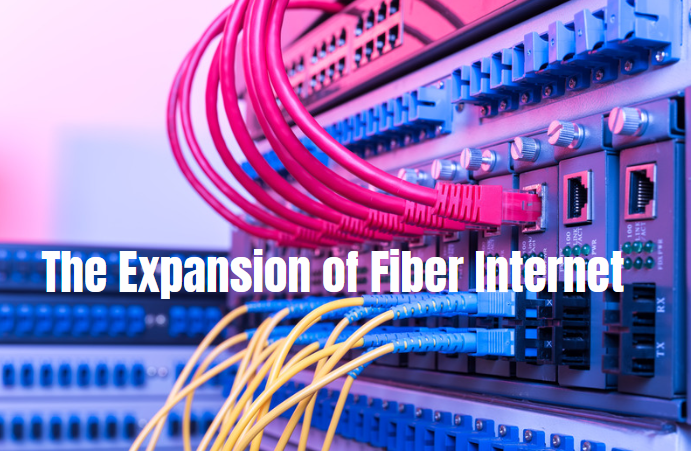Fiber internet, known for its high-speed connectivity and reliability, has significantly expanded over the past decade, transforming how people access and use the internet. This expansion is driven by the growing demand for faster internet speeds, the increasing number of connected devices, and the need for more reliable and stable internet connections. Here’s an in-depth look at the factors contributing to the expansion of fiber internet and its impact on various sectors.
- Unprecedented Speed and Bandwidth
Fiber optic cables transmit data using light, allowing for incredibly high speeds and large bandwidth capacities. This technology can deliver internet speeds up to 1 Gbps and beyond, far exceeding the capabilities of traditional copper-based connections. This speed enables seamless streaming, rapid downloads, and the efficient handling of multiple connected devices, making it ideal for households and businesses alike.
- Rising Demand for High-Speed Internet
The demand for high-speed internet has surged due to the increasing reliance on digital platforms for work, education, entertainment, and communication. The COVID-19 pandemic further accelerated this demand, with remote work and online learning becoming the norm. Fiber internet’s ability to provide consistent, high-speed connectivity makes it the preferred choice for these activities, driving its expansion.
- Support for Advanced Technologies
As advanced technologies such as 5G, the Internet of Things (IoT), and smart homes become more prevalent, the need for robust and high-capacity internet infrastructure grows. Fiber internet supports these technologies by providing the necessary bandwidth and low latency required for optimal performance. This compatibility with emerging technologies has been a significant factor in the expansion of fiber networks.
- Investment by Internet Service Providers (ISPs)
Major ISPs and telecommunications companies are investing heavily in the deployment of fiber optic networks. Companies are leading the charge, rolling out fiber internet in urban and suburban areas across the globe. Government initiatives and public-private partnerships are also playing a crucial role in funding and accelerating the expansion, especially in underserved rural areas.
- Economic and Social Impact
The expansion of fiber internet has profound economic and social implications. Fiber internet in New York City and elsewhere fosters economic development by attracting businesses, enhancing productivity, and enabling innovation. It also improves access to education and healthcare services, bridging the digital divide and contributing to social inclusion. Communities with fiber internet infrastructure often see increased property values and better quality of life.
- Challenges in Deployment
Despite its advantages, the deployment of fiber internet faces several challenges. The initial cost of installing fiber optic cables is high, and laying the infrastructure in densely populated urban areas or geographically challenging rural regions can be complex and time-consuming. However, the long-term benefits and the decreasing costs of technology are encouraging continued investment and expansion.
- Future Prospects
The future of fiber internet looks promising, with ongoing advancements in technology and infrastructure. Innovations such as bendable fiber optics and improved installation techniques are making deployment more feasible and cost-effective. Additionally, as the demand for high-speed internet continues to grow, more areas will likely see the rollout of fiber networks.
- Global Expansion
The expansion of fiber internet is not limited to developed countries. Many developing nations are recognizing the importance of high-speed internet for economic growth and are investing in fiber optic infrastructure. International collaborations and investments are helping to extend fiber networks to regions previously lacking adequate internet access, contributing to global connectivity and development.

